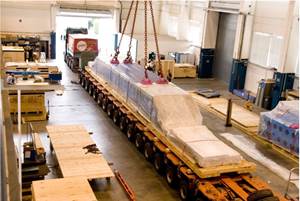Molds In Miniature
A shop that makes tooling for metal injection molding (MIM) relies on a machining center designed specifically for micro-scale work.
World Class Technology of McMinnville, Oregon, draws a distinction between 0.3-mm-diameter end mills and end mills that are 0.5 mm in diameter. Another shop might simply consider both to be tiny tools. To the moldmaking personnel at World Class, however, one is a finisher while the other is potentially a rougher. Only the 0.3-mm tool is so small that it needs to be reserved for light cuts and intricate details. Tools at least 0.5 mm in diameter are big enough for this shop to use them in roughing, even using them to plow through tool steel that has been heat treated to 60 Rc.
World Class is a metal injection molder. Compared to plastic injection molds, which may have precise machining requirements themselves, metal injection molds have even greater need for fine precision and small cuts, as tooling manager John Ashton explains. With metal’s greater tendency to flash, he says, MIM shutoff surfaces have to be machined more precisely. An additional consideration is the small scale of MIM parts. At World Class, the primary end products are orthodontia—particularly the metal brackets for braces. Available in many varieties for a range of tooth-correcting applications, these brackets are made via MIM using core and cavity inserts machined in the in-house tooling shop.
This last part is particularly significant, Mr. Ashton says. Maintaining in-house expertise and capacity for mold making lets the shop introduce new product designs to the market more quickly. Even so, moldmaking processes in the past at this shop didn’t always realize this expediency.
In the past, the shop tried to hold its ±0.0002-inch dimensional tolerances on conventional VMCs. The shop tried mightily, in fact, taking measures including running the machines for 2 hours before cutting to stabilize temperature effects. In spite of such measures, considerable follow-up work was often needed, with the shop using manual grinding to bring machined parts to spec. A more responsive process came only when the shop adopted a machining center from German machine tool builder Kern Micro-und Feinwerktechnik that was designed specifically with micro machining in mind.
The “micro” emphasis is immediately apparent in the machine’s travels. While comparable in size to a smaller VMC, the machine has XYZ travels of roughly just 12 × 11 × 10 inches. Some of the leftover volume contains a workchanger system that allows the machine to operate like a cell, keeping a queue of small parts ready to run. The rest of the volume is the result of a machine design providing the stability for machining accuracies of ±2 microns. The same stability now enables World Class to rough hard steel with half-millimeter tools and finish its molds without hand-grinding.
Vibration And Temperature
Burkhard Rother is the managing director of the machine tool maker. He describes some of the features that allow the Kern machine to use micro-scale milling and drilling tools effectively. Part of the success results from large mass, he says. A special polymer concrete frame contributes to the machine’s total weight of 3 metric tons. The frame not only damps vibration (damping properties are at least 800 percent better than typical machine constructions, he says), but also reacts to temperature changes much more slowly than cast iron or steel. In this design, while the X and Y axes are integrated into the table, the Z axis is separate. Thus, despite the large weight, the Z axis moves just 30 kilograms—only a little more than the weight of the spindle.
Other features relate to this spindle. As tool diameters get smaller, runout has to be more tightly controlled. Mr. Rother says the Kern spindles are engineered to have runout of less than 1 micron. Other spindle-related features include:
- Dimensional compensation. A spindle can change not only Z-length as a result of thermal change, but also its positioning in X and Y. The machine tool builder studies these reactions in all three dimensions to create compensation algorithms that are tailored to every machine. In addition to being individually compensated in this way, spindles are water-cooled to hold temperature to within ±0.25°C.
- Vector control. The control knows the precise angular position of the spindle. Cutting tools are always returned to the tool magazine in the same angular orientation they had when they were loaded. This is particularly important for the touch probe, which can always approach the part from the same initial orientation. Thanks in part to this effect, one of the probe models offered by Kern can be used on this machine to measure with ±400-nanometer accuracy.
Hard Milling Or Soft
The machine at World Class has five axes (two rotary axes under the workpiece) and a 50,000-rpm spindle. Manufacturing engineer Juergen Bathen and machinist Randy Gillepsie have been exploring what this machine can do for the company and how best to apply it. In addition to machining cores and cavities directly, the machine is used to make EDM electrodes for molds that feature either deep recesses or sharp internal corners. These electrodes are machined from copper.
Molds can be rough milled either before or after heat treating. Whether or not to hard mill is a question whose answer varies from job to job, and often involves a judgment call, the two men say. The capabilities of the machine to hard-mill with sub-millimeter tooling are not in doubt; the question instead comes down to cost. Hard milling accelerates tool wear, and the micro tools can be expensive. Accordingly, a mold that needs a larger range of cutting tools because of its intricate features tends to favor soft milling, simply for the sake of keeping those cutters sharper longer.
Mr. Bathen says it was never the shop’s intention for this machine to become a workhorse. The shop does all the work it can on other machining centers, even performing preparatory work on less accurate machines for workpieces that are intended for the Kern. Still, the automatic workchanger, with its 24 stations, makes it easy to queue a series of mold and electrode jobs for continuous production. In addition, the shop finds new uses for this machine, one of which is rapid prototyping of new bracket models. The machine has thus seen a growth in demand, and that growth has brought the shop to a bottleneck—limited programming capacity.
Many mold shops are familiar with this bottleneck. In any case where the machine is fast enough to speed through work more quickly than tool paths can be provided, the demand on programming can become acute. The challenge is no different at World Class, says Mr. Bathen, and the small scale of the parts actually makes the problem worse. For such tiny parts, the machining proceeds quickly while the programming is often more difficult. Toolpath directions have to be chosen with care to avoid otherwise unnoticeable burrs that might break tolerances at the small scale.
The net effect to Mr. Bathen and Mr. Gillepsie is that the Kern machine seems frequently to be waiting on programs (a problem the shop might soon have to address). The small molds, ironically enough, seem to enlarge the demands on programmers.
Related Content
How to Mitigate Chatter to Boost Machining Rates
There are usually better solutions to chatter than just reducing the feed rate. Through vibration analysis, the chatter problem can be solved, enabling much higher metal removal rates, better quality and longer tool life.
Read MoreChoosing a Five-Axis Machine Tool With Automation in Mind
While much focus is placed on the machinery that moves parts, the features most important for automating five-axis machining are arguably found in the machine tool itself.
Read MoreHeavy Engineering: The Complex Logistics of Moving Large Machine Tools
One of our fascinations with large-format machine tools has little to do with their capabilities, but everything to do with the logistics involved with getting them up and running. Here’s how one of the world’s oldest builders of giant machine tools tackles the challenge.
Read MoreAn Additive Manufacturing Machine Shop
Finish machining additively manufactured implants requires different pacing and workflow than cutting parts from stock — different enough for an experienced manufacturer to warrant a dedicated machine shop.
Read MoreRead Next
The Hard Milling Imperative
Hard milling allows mold components to be machined in the hardened state, thus skipping several expensive and time-consuming processes such as electrical discharge machining and hand polishing.
Read MoreThe Cut Scene: The Finer Details of Large-Format Machining
Small details and features can have an outsized impact on large parts, such as Barbco’s collapsible utility drill head.
Read More.jpg;maxWidth=970;quality=90)
.jpg;width=70;height=70;mode=crop)
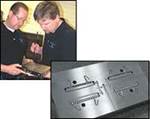



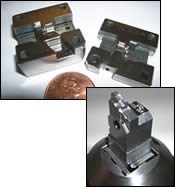
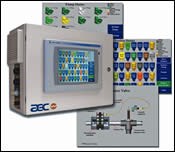
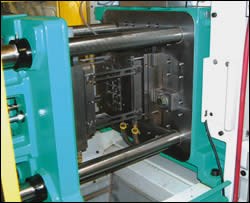





.jpg;maxWidth=300;quality=90)
















